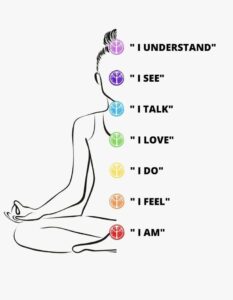-Understanding narcissism allows us to identify it in others and analyze our vulnerability
- The mind of a narcissist is like an iceberg, deep and enigmatic. When dissected, a variety of personality traits are revealed, from self-destruction to manipulation. Particularly in this day and age, the capacity to identify a narcissist, comprehend their fears and strategies, and eventually destroy their control mechanisms is an essential skill
-🍀 We can recognize narcissists because of certain traits that have been the subject of decades of research. They include:
- They are seductive: They use their confidence to their advantage to captivate and impose their presence.
- They know how to communicate well: One of their defining characteristics is their ability to use language and tone of voice effectively to accomplish their goals.
- They are experts in a specific subject: They use their expertise in a particular field as a means of persuasion.
- They have good social relationships: They often operate in groups and manipulate others to their advantage to appear confident in front of others.”
-Narcissists lack empathy, making a healthy relationship impossible
🍀We can categorize them into two primary groups: overt narcissists, who exhibit grandiosity and are readily identifiable, and covert narcissists, who operate under a facade of shyness or modesty but are, in fact, adept at manipulating and deceiving.”“Likewise, we can classify narcissists according to their predominant personality pattern, such as:
- Histrionics: They seek as much attention as possible, surrounding themselves with an audience that can give them the admiration they seek.
- Obsessive compulsive: They control everything around them. They are very perfectionistic and enjoy the fact that they always have control.
- Borderline: They are afraid of abandonment, and to avoid it, they create narratives that make them seem like interesting people by distorting reality. They expose their vulnerability by questioning it.
- Paranoid: They distrust everyone and act extremely defensively.
- Psychopathic: They can become the most dangerous as they seek their own pleasure, regardless of whether or not they hurt others.” 🍀Learn to spot manipulation :
There are several types of influence in communication: - Persuasion: It happens through the use of respectful and strategic communication. The objective is to encourage a person to realize that their goals are similar to those of the narcissist.
- Convincing: The speaker uses this method when they want someone else to align with their ideals and views.
- Manipulation: The manipulator wants to convince someone to pursue an objective that will only favor them. The outcome for the person carrying it out, whether beneficial or harmful, is secondary
🍀Narcissists often employ these forms of communication to exert control and manipulate others. However, they have many more tricks up their sleeves, such as:
- Love bombing: This tactic is used in romantic relationships to drown a person with compliments, gifts, and appreciation.
- Guilt projection: Narcissists will project their failures and wrongdoings onto others to avoid questioning.
- Victimization: Narcissists often avoid taking responsibility and instead seek sympathy from others to portray themselves as victims.
- Intermittent reinforcement: They accomplish this by rewarding their victims for exhibiting their desired behavior and reprimanding them when they fail.
- The silent treatment: The narcissist becomes distant and indifferent toward the person, as a way of punishing them.
- Conditioned flattery: They use compliments or praise strategically to influence someone’s behavior or decisions.
- Narcissistic rage: They might intimidate and threaten their victims when they directly oppose the narcissists.
- Pressure or insistence: This strategy is about criticizing others to reinforce the narcissist’s self-esteem.
- Smokescreen: The narcissist might make the victim believe they are going crazy, are mistaken, or exaggerating a situation.
- Smear campaign: The narcissist cooperates with their allies to discredit their victims.
- Emotional blackmail: They deceive victims and instill in them the belief that they are incapable of achieving anything.
- Lies: They omit details to make their version of a story more beneficial to them.
- Taking advantage of family relationships: Narcissists will exploit family dysfunction to validate their toxic behaviors.
- Triangulations: This involves manipulating someone with the help of a trusted ally who is also being manipulated.
- Gaslighting: A common strategy is making the victim believe things that did not actually happen by questioning their actions.”
🍀breaking the cycle of abuse:
The dynamics between a narcissist and their victim can often involve a complex interplay. Victims may be caught in this cycle without realizing it, and recognizing the situation and finding a way out can be incredibly challenging. This lack of awareness makes the cycle particularly insidious and hard to escape.
This cycle usually consists of the following phases:
- The first is love bombing when the narcissist sets out to glorify and praise their victim. They recognize the person’s qualities and convince them that they are the center of their universe.
- Then, they quickly enter the contempt phase. This stage is when they will openly demonstrate that nothing their target does is good enough for them and criticize every aspect of their being to discredit their accomplishments.
- After this, they transition into intermittent reinforcement, moving constantly between the previous two stages, seeking to leave the person confused and awaiting their opinion and approval.
- Next, they begin to exercise perverse triangulation. They will employ their contacts, who are just as manipulated as their other victims, to turn them against the victim.
- In the phase of discarding, we reach the point where the narcissist reveals their true intentions and will achieve their goal without stopping to think about the other person’s feelings.
A part of the process that doesn’t always happen is called hoovering. If the victim manages to get rid of the narcissist, nothing eliminates the possibility that they will return a couple of years later under the guise that they have changed. Once they feel confident again, they will start the cycle from scratch.”
🍀there are several ways to break away. Let’s go through them.
Let’s start with the Gray Rock Method. The victim takes a stoic and aloof attitude to pressure the narcissist to try other strategies, which makes them lose interest over time. Additionally, strategic dialogue is useful. This makes the narcissist think the person understands their way of seeing the world without compromising their character. Instead of confronting them, they may ask questions.
If none of these strategies work, learning to say “no” gracefully, firmly, and often is key.
in conclusion, Interacting with someone who has narcissistic personality disorder can be challenging, especially since they often thrive in creating stressful situations. To navigate such relationships effectively, strategic thinking is key. By learning how to set clear boundaries, you can gradually reduce their impact on your life. let’s try this:
Stand in front of a mirror and practice saying your boundaries assertively.
- Choose a positive affirmation or mantra to remind yourself of your worth during tough moments.
- If you’re in a work or romantic relationship with a potential narcissist, surround yourself with trusted family and friends.
Reference: Headway.





